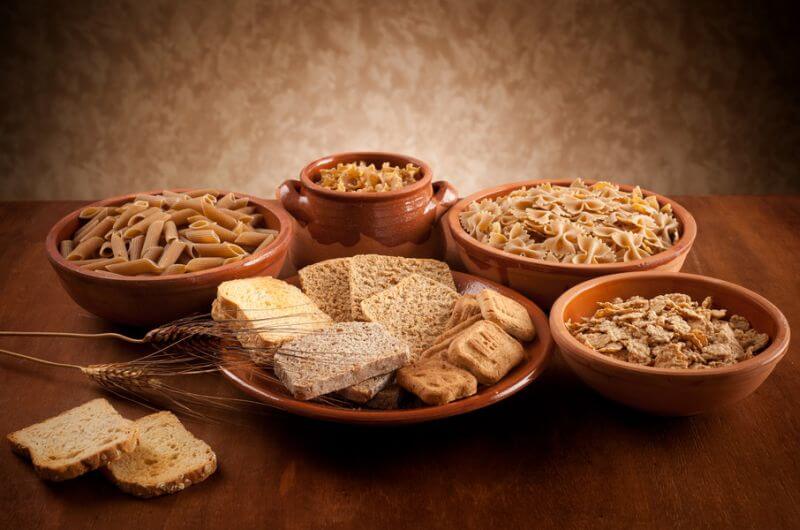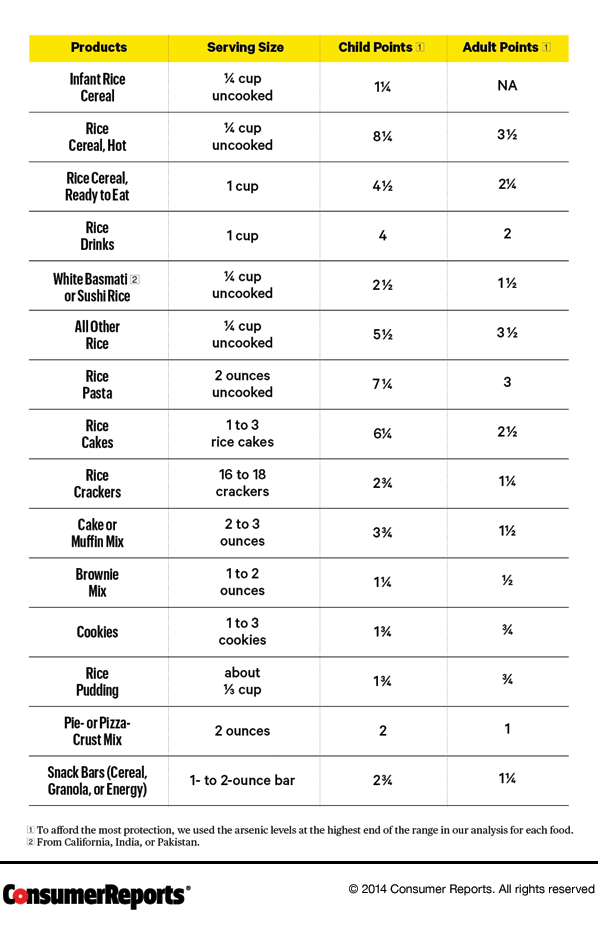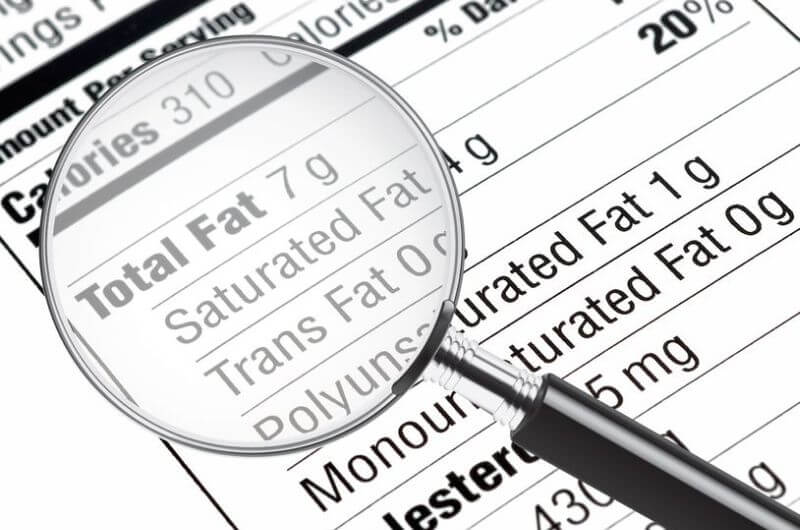According to many health and fitness gurus, the brown rice vs. white rice debate is cut-and-dried.
Brown rice is a “good” carb, they say, and white rice is a “bad” one.
Eat a lot of the former, they say, and you’ll be healthy, wealthy, and wise; eat a lot of the latter and you’ll gain weight, crash your metabolism, and probably get diabetes.
Well, this might make for catchy listicles and magazine headlines, but what does science have to say about it?
Does white rice deserve the notoriety? Does brown rice deserve the hosannas?
Well, that’s what we’re going to cover in this article, and as you’ll soon see, a lot of what you’ve likely heard about rice is bunk.
The idea that brown rice trumps its lighter counterpart in every meaningful way is more or less a myth.
As you’ll soon see, it really doesn’t matter which one you choose.
Let’s dive in and see what we can learn…
What’s the Difference Between Brown and White Rice?

Let’s start with the basics.
Rice is technically a seed, but we all know it as a grain that comes in white and brown and refined and whole grain varieties.
The difference between these options really comes down to the processing.
As the Minnesota Department of Health explains, whole grains, like brown rice, are made up of three separate parts:
1. The Bran
This is the outer layer of the grain that contains fiber, antioxidants, B vitamins, phytochemicals, and the majority of the minerals.
2. The Endosperm
This is the middle largest layer that contains protein, carbs, and small amounts of B vitamins and minerals.
3. The Germ
This is an inner portion at one end of the grain that contains fats, B vitamins, phytochemicals, and antioxidants like vitamin E.
Here’s a simple visual:

White rice, on the other hand, is stripped of everything except the endosperm, which, we’re told, is the crux of the problem.
Well, while it’s generally a good idea to eat a diet rich in relatively unprocessed foods, that doesn’t mean you should avoid white rice.
Let’s find out why…


Which Is Healthier? Brown Rice or White Rice?
It’s easy to make the argument that brown rice is healthier than white rice.
It’s more nutritious (on paper, at least — more on that in a minute) and studies confirm the health benefits of eating whole grains and the risks associated with eating refined grains.
What that pitch doesn’t tell you, though, is that the nutritional advantages of brown rice aren’t nearly as exciting as you might think and the health risks don’t apply to you unless you’re sedentary and overweight and eat poorly.
Let’s unpack this mystery…
Is Brown Rice More Nutritious Than White Rice?
You’ve probably heard that brown rice is more nutritious than white rice, and it’s true.
It contains 43% more protein, 105% more fiber, and a whopping 425% more omega-3 fatty acids than white rice.
Impressive, right?
Well, while those statements are accurate on paper, they’re actually negligible when viewed in the right context.
To understand why, let’s take a look at actual numbers, starting with the calories and macros:
| Nutrient | White Rice | Brown Rice |
| Serving size | per 1 cup/ 174 g | per 1 cup/ 195 g |
| Calories | 169 | 216 |
| Carbs (g) | 36.7 | 44.8 |
| Fiber (g) | 1.7 | 3.5 |
| Protein | 3.5 | 5.0 |
| Fat (g) | 0.3 | 1.8 |
| Saturated (g) | 0.1 | 0.4 |
| Mono (g) | 0.1 | 0.6 |
| Poly (g) | 0.1 | 0.6 |
| Omega 3 (mg) | 5.2 | 27.3 |
| Omega 6 (mg) | 115 | 603 |
And now the vitamins and minerals:
| Vitamin | White Rice | Brown Rice |
| Vitamin A (IU) | 0.0 | 0.0 |
| Vitamins C (mg) | 0.0 | 0.0 |
| Vitamin E (mg) | 0.1 | 0.1 |
| Vitamin K (mcg) | 0.0 | 1.2 |
| Thiamin (mg) | 0.0 | 0.2 |
| Riboflavin (mg) | 0.0 | 0.0 |
| Niacin (mg) | 0.5 | 3.0 |
| Vitamin B6 (mg) | 0.0 | 0.3 |
| Folate (mcg) | 1.7 | 7.8 |
| Vitamin B12 (mcg) | 0.0 | 0.0 |
| Pantothenic Acid (mg) | 0.4 | 0.6 |
| Choline (mg) | 3.7 | 17.9 |
| Mineral | White Rice | Brown Rice |
| Calcium (mg) | 3.5 | 19.5 |
| Iron (mg) | 0.2 | 0.8 |
| Magnesium (mg) | 8.7 | 83.9 |
| Phosphorous (mg) | 13.9 | 162 |
| Potassium (mg) | 17.4 | 83.9 |
| Sodium (mg) | 8.7 | 9.8 |
| Zinc (mg) | 0.7 | 1.2 |
| Copper (mg) | 0.1 | 0.2 |
| Manganese (mg) | 0.5 | 1.8 |
| Selenium (mcg) | 9.7 | 19.1 |
One of the reasons we’re often told to choose brown rice over white rice is the fiber content.
Well, as brown rice is a whole grain, it does have more fiber than white rice…but not by much (1.8 grams per cup).
Moreover, rice of any kind doesn’t make for nearly as good of a source of fiber as fruit and vegetables, which you should be eating plenty of anyway.
For example, one cup of boiled broccoli contains just 55 calories and gives you about 5 grams of fiber and one measly apple contain about 90 calories and over 4 grams of fiber.
Thus, if you eat your quota of fruit and veggies every day, the fiber obtained from rice just won’t matter much.
As for the macronutrients, we see that brown rice has a little more of everything, which again technically makes it more nutritious, but the actual amounts are insignificant.
And in terms of micronutrients
- Apart from niacin, folate, choline and vitamin K, there’s not a huge difference in vitamin content between the two.
- As far as minerals go, we can clearly see that this is the area that brown rice wins out (but again, your ~cup of rice per day isn’t going to be your primary source of minerals — veggies are).
What you can’t see in the charts above, though, is that brown rice also contains significant amounts of molecules that undermine its nutritional advantage.
These substances are known as antinutrients, and they block the absorption of vitamins and minerals.
One example is phytic acid, also known as phytate, which you’ll find in brown rice at a rate of roughly 0.06 to 1.08 g per 100 g, and which can inhibit micronutrient absorption in the digestive tract, particularly zinc, iron, magnesium and calcium.
This helps explain why, in a study conducted by scientists at Osaka City University, brown rice decreased the digestibility of protein and fats while white rice didn’t.
Another study confirms this phenomenon — phytates can reduce protein bioavailability and impair the function of certain digestive enzymes.
Interestingly, research shows that fermented food sources such as sauerkraut, kimchi, miso and so forth, counteract the inhibitory effects of phytates and aid in digestion. Eating fermented grain products like sourdough bread and soaking and germinating seed kernels does the same.
So, the bottom line is this:
Brown rice may be slightly more nutritious than white rice but, when viewed in context of your diet as a whole, it doesn’t deserve its reputation as the obvious choice for “clean eaters.”
What About the Glycemic Index?

The glycemic index (GI) is a numeric system that ranks how quickly the body converts carbohydrates into glucose (blood sugar).
Carbs are ranked on a scale of 0 to 100 depending on how they affect blood sugar levels once eaten.
A GI rating of 55 and under is considered low on the index, while a rating of 56 to 69 is medium, and a rating of 70 or above is high.
Simple carbs are converted into glucose quickly and thus have high GI ratings. Examples of simple carbs and their corresponding GI ratings are sucrose (table sugar) (65), white bread (71), and white potato (82).
Complex carbs are converted into glucose more slowly and thus have lower GI ratings. Examples of complex carbs and their corresponding GI ratings are apples (39), black beans (30), and whole-grain pasta (42).
Now, as far as rice goes, I’m not sure brown rice is generally known as better in terms of GI because it falls in more or less the same area of the index as white rice (50 to 87 vs. 43 to 89).
And, ironically, basmati rice is the lowest on the GI of all types, coming in at 43 to 57.
More importantly, though, is the fact that if you’re relatively lean and physically active, none of this really matters.
While sensible eating naturally involves eating plenty of low-glycemic foods (relatively unprocessed grains and fruit and vegetables), including high-glycemic foods in your diet won’t adversely affect your body composition or health.
Check out this article to learn why.
What About Arsenic?
Arsenic is an element found in nature and many man-made products (including pesticides, herbicides and fertilizers), and it’s toxic to us humans.
It finds its way into our diet and bodies in various ways, including…
- Seafood (fish, crustaceans, molluscs, algae, blue mussels)
- Drinking water (though mainly in places like Asia and South America)
- Juice, milk, broth
- Air (yep, even the air we breathe is contaminated)
And, of course, rice, which contains higher levels of arsenic than other grains due to the way it’s grown.
This explains why research clearly shows that people that eat more rice have more arsenic in their bodies, and this applies to both brown and white rice.
Ironically, according to the FDA, brown rice generally contains a bit more arsenic than white rice, and the white basmati rice has the lowest levels of arsenic of all types commonly eaten.
The sixty-four dollar question, then, is how concerned should we be about this?
Well, not enough to avoid rice completely, but enough to take measures to reduce its arsenic content before we eat it and limit our rice intake overall.
Here’s a simple way to reduce your rice’s arsenic levels by up to 57%:
- Soak brown rice for at least 3 hours before cooking.
- Wash the rice thoroughly before cooking (reduces arsenic levels by 10 to 30%).
- Choose basmati rice, which is naturally the lowest in arsenic.
- Cook it in a high volume of water (a water/rice ratio of 6:1) and discard excess water afterward (reduces arsenic by 35 to 45%).
And in terms of limiting your intake, the FDA planned on issuing guidelines on this back in 2014 but hasn’t yet, so in the meantime, we can look to testing and analysis conducted by Consumer Reports.
What came of their work is a points system that looks like this:
 Their recommendation is people don’t exceed seven points per week, which, as you can see, is fairly easy to do if you’re a rice lover (or if you eat a lot of processed foods that contain rice and rice derivatives).
Their recommendation is people don’t exceed seven points per week, which, as you can see, is fairly easy to do if you’re a rice lover (or if you eat a lot of processed foods that contain rice and rice derivatives).
Two things to keep in mind, though:
- They built the points system using the arsenic levels seen at the highest end of the range in their testing.
- They didn’t assume that people would be taking special measures to reduce the arsenic in the rice they eat.
This, to me, says that we can stretch their boundaries a bit without putting our health at risk.
That said, it’s worth noting that pregnant women should be especially cautious with their intake of rice and rice derivatives (brown rice syrup, for example) because research suggests that in utero exposure to arsenic increases their children’s risk of cancer and cardiovascular and respiratory disease later in life.
Also, in case you’re wondering if all this applies to organic rice, the answer is yes — there’s no evidence that organic rice contains lower amounts of arsenic than conventional.
Is Brown Rice or White Rice Better for Weight Loss?

I’ll keep this short and sweet:
Neither is better.
While some foods are more conducive to weight loss than others, there’s no such thing as a “weight loss food.”
If you know what you’re doing with your calories and macros, you can eat anything and lose weight.
That’s why this guy was able to lose 27 pounds on a convenience store diet of protein shakes, Twinkies, Doritos, and other confections. And why this guy was able to lose 56 pounds eating nothing but McDonald’s for six months straight.
That isn’t to say you should follow in their footsteps — nutrition does matter — but they’re simply testaments to the universality of energy balance.
Body weight is dictated by energy in vs. energy out. End of story.
So, bringing this back to rice, the point is clear:
So long as you know what you’re doing with your meal planning, you can lose weight equally well with brown and white rice.
The Bottom Line on Brown Rice vs. White Rice
The optics of the brown and white rice debate simply don’t match the reality.
While it’s true that brown rice contains more nutrients, the difference is rather negligible to begin with and becomes even more so when you factor in the antinutrients.
While it’s true that brown rice is lower on the glycemic index, it’s not that much lower, and the glycemic index is small beer anyway in the grand scheme of being fit and healthy.
So, in the last analysis, I think it’s clear that you should eat the type of rice that you like most, and if you want to be as scrupulous as possible, opt for basmati rice whenever possible.
What’s your take on brown rice vs. white rice? Have anything else to share? Let me know in the comments below!
+ Scientific References
- Farzan SF, Karagas MR, Chen Y. In utero and early life arsenic exposure in relation to long-term health and disease. Toxicol Appl Pharmacol. 2013;272(2):384-390. doi:10.1016/j.taap.2013.06.030
- Raab A, Baskaran C, Feldmann J, Meharg AA. Cooking rice in a high water to rice ratio reduces inorganic arsenic content. J Environ Monit. 2009;11(1):41-44. doi:10.1039/b816906c
- Sengupta MK, Hossain MA, Mukherjee A, et al. Arsenic burden of cooked rice: Traditional and modern methods. Food Chem Toxicol. 2006;44(11):1823-1829. doi:10.1016/j.fct.2006.06.003
- Meharg AA, Williams PN, Deacon CM, et al. Urinary excretion of arsenic following rice consumption. Environ Pollut. 2014;194:181-187. doi:10.1016/j.envpol.2014.07.031
- Wei Y, Zhu J, Nguyen A. Rice consumption and urinary concentrations of arsenic in US adults. Int J Environ Health Res. 2014;24(5):459-470. doi:10.1080/09603123.2013.857393
- Williams PN, Villada A, Deacon C, et al. Greatly enhanced arsenic shoot assimilation in rice leads to elevated grain levels compared to wheat and barley. Environ Sci Technol. 2007;41(19):6854-6859. doi:10.1021/es070627i
- Nico PS, Fendorf SE, Lowney YW, Holm SE, Ruby M V. Chemical structure of arsenic and chromium in CCA-treated wood: Implications of environmental weathering. Environ Sci Technol. 2004;38(19):5253-5260. doi:10.1021/es0351342
- Wilson D. Arsenic Consumption in the United States. J Environ Health. 2015;78(3):8-14; quiz 44. http://www.ncbi.nlm.nih.gov/pubmed/26591332. Accessed January 2, 2020.
- Villaescusa I, Bollinger JC. Arsenic in drinking water: Sources, occurrence and health effects (a review). Rev Environ Sci Biotechnol. 2008;7(4 SPEC. ISS.):307-323. doi:10.1007/s11157-008-9138-7
- Sloth JJ, Julshamn K. Survey of total and inorganic arsenic content in blue mussels (Mytilus edulis L.) from Norwegian fiords: Revelation of unusual high levels of inorganic arsenic. J Agric Food Chem. 2008;56(4):1269-1273. doi:10.1021/jf073174+
- Scheers N, Rossander-Hulthen L, Torsdottir I, Sandberg AS. Increased iron bioavailability from lactic-fermented vegetables is likely an effect of promoting the formation of ferric iron (Fe3+). Eur J Nutr. 2016;55(1):373-382. doi:10.1007/s00394-015-0857-6
- Mlyoshi H, Okuda T, Koishl H, Okuda K. Effects of Brown Rice on Apparent Digestibility and Balance of Nutrients in Young Men on Low Protein Diets. J Nutr Sci Vitaminol (Tokyo). 1987;33(3):207-218. doi:10.3177/jnsv.33.207
- Sparvoli F, Cominelli E. Seed biofortification and phytic acid reduction: A conflict of interest for the plant? Plants. 2015;4(4):728-755. doi:10.3390/plants4040728
- Schlemmer U, Frølich W, Prieto RM, Grases F. Phytate in foods and significance for humans: Food sources, intake, processing, bioavailability, protective role and analysis. Mol Nutr Food Res. 2009;53(SUPPL. 2):330-375. doi:10.1002/mnfr.200900099
- Callegaro M da D, Tirapegui J. [Comparison of the nutritional value between brown rice and white rice]. Arq Gastroenterol. 33(4):225-231. http://www.ncbi.nlm.nih.gov/pubmed/9302338. Accessed January 2, 2020.
- Aune D, Norat T, Romundstad P, Vatten LJ. Whole grain and refined grain consumption and the risk of type 2 diabetes: A systematic review and dose-response meta-analysis of cohort studies. Eur J Epidemiol. 2013;28(11):845-858. doi:10.1007/s10654-013-9852-5
- Helnæs A, Kyrø C, Andersen I, et al. Intake of whole grains is associated with lower risk of myocardial infarction: The Danish Diet, Cancer and Health Cohort. Am J Clin Nutr. 2016;103(4):999-1007. doi:10.3945/ajcn.115.124271









